
i.
To identify: The area that represents a solution to the first inequality but not the second.
The graph is shown below:
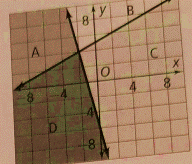
The shaded area C represents a solution to the first inequality but not the second inequality.
Given information:
The given system of inequality is:
Explanation:
Consider the given system of inequality is:
The graph of the both inequality is shown below:
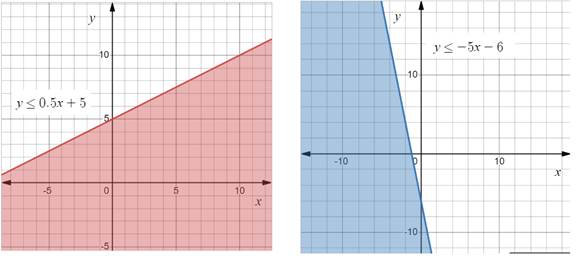
Now draw the graph of both equation on a same coordinate axis.
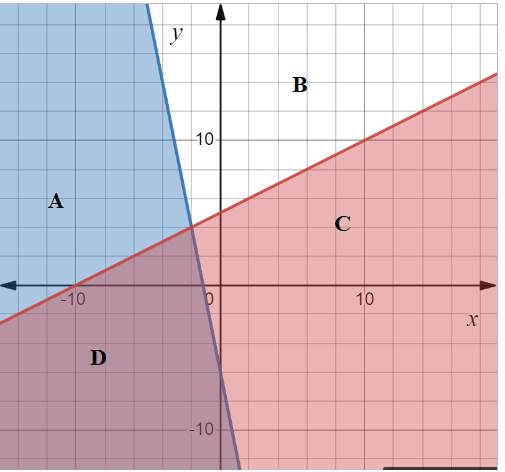
The solution of the first inequality is the area shaded by red color.
Here it can be observed that the shaded area C represents a solution to the first inequality only.
ii.
To identify: The area that represents a solution to the second inequality but not the first.
The graph is shown below:
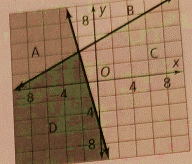
The shaded area A represents a solution to the second inequality but not the first inequality.
Given information:
The given system of inequality is:
Explanation:
Consider the given system of inequality is:
The graph of the both inequality is shown below:
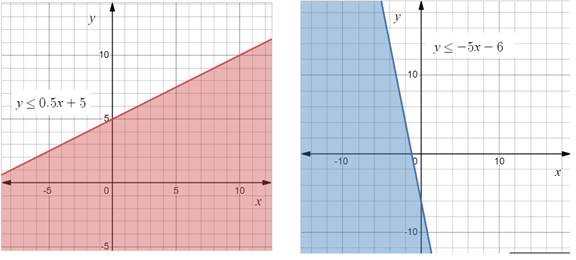
Now draw the graph of both equation on a same coordinate axis.
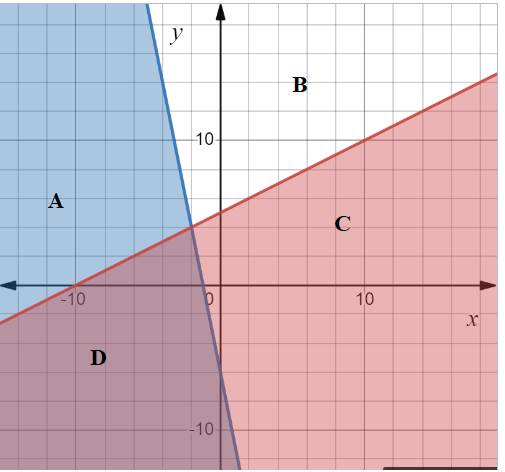
The solution of the first inequality is the area shaded by red color.
Here it can be observed that the shaded area A represents a solution to the second inequality but not the first inequality.
iii.
To identify: The area that represents a solution to both inequalities.
The given graph is shown below:
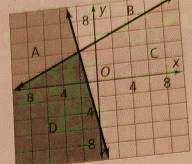
The shaded area D represents a solution to the both inequities.
Given information:
The given system of inequality is:
Explanation:
Consider the given system of inequality is:
The graph of the both inequality is shown below:
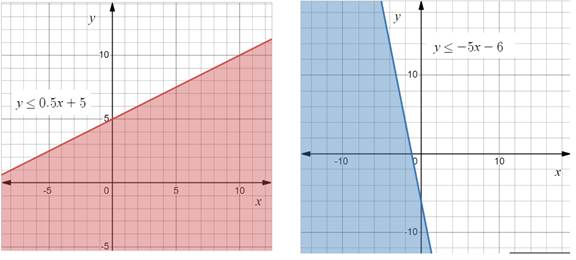
Now draw the graph of both equation on a same coordinate axis.
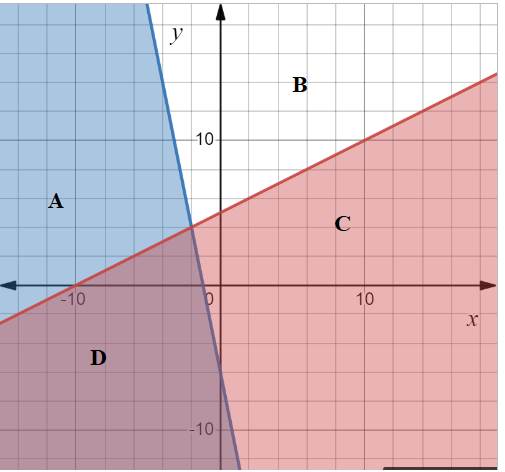
Here it can be observed that the shaded area D represents a solution to the both inequities.
Because it is the only area which contains red and blue shaded part.
iv.
To identify: The area that represents a solution to neither inequality.
The given graph is shown below:
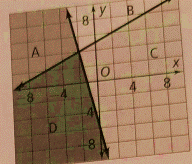
The shaded area B represents a solution to the neither inequity.
Given information:
The given system of inequality is:
Explanation:
Consider the given system of inequality is:
The graph of the both inequality is shown below:
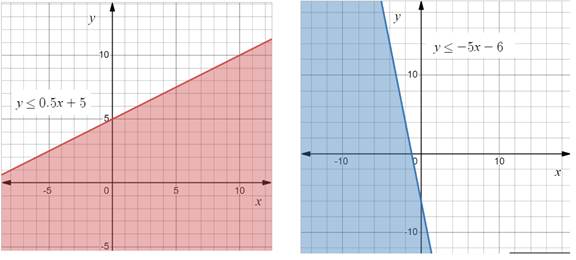
Now draw the graph of both equation on a same coordinate axis.
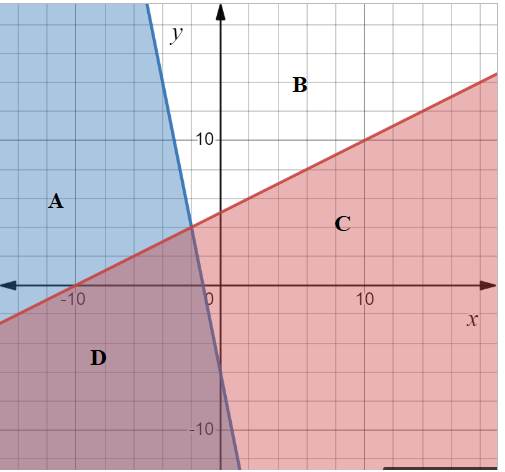
Here it can be observed that the shaded area B represents a solution to the neither inequity.
Because this is the only area which is not shaded.
Chapter 3 Solutions
High School Math 2015 Common Core Algebra 2 Student Edition Grades 10/11
- please Solve questions by Course Name( Ordinary Differential Equations II 2)arrow_forwardInThe Northern Lights are bright flashes of colored light between 50 and 200 miles above Earth. Suppose a flash occurs 150 miles above Earth. What is the measure of arc BD, the portion of Earth from which the flash is visible? (Earth’s radius is approximately 4000 miles.)arrow_forwarde). n! (n - 1)!arrow_forward
- Suppose you flip a fair two-sided coin four times and record the result. a). List the sample space of this experiment. That is, list all possible outcomes that could occur when flipping a fair two-sided coin four total times. Assume the two sides of the coin are Heads (H) and Tails (T).arrow_forwarde). n! (n - 1)!arrow_forwardEvaluate the following expression and show your work to support your calculations. a). 6! b). 4! 3!0! 7! c). 5!2! d). 5!2! e). n! (n - 1)!arrow_forward
 Algebra and Trigonometry (6th Edition)AlgebraISBN:9780134463216Author:Robert F. BlitzerPublisher:PEARSON
Algebra and Trigonometry (6th Edition)AlgebraISBN:9780134463216Author:Robert F. BlitzerPublisher:PEARSON Contemporary Abstract AlgebraAlgebraISBN:9781305657960Author:Joseph GallianPublisher:Cengage Learning
Contemporary Abstract AlgebraAlgebraISBN:9781305657960Author:Joseph GallianPublisher:Cengage Learning Linear Algebra: A Modern IntroductionAlgebraISBN:9781285463247Author:David PoolePublisher:Cengage Learning
Linear Algebra: A Modern IntroductionAlgebraISBN:9781285463247Author:David PoolePublisher:Cengage Learning Algebra And Trigonometry (11th Edition)AlgebraISBN:9780135163078Author:Michael SullivanPublisher:PEARSON
Algebra And Trigonometry (11th Edition)AlgebraISBN:9780135163078Author:Michael SullivanPublisher:PEARSON Introduction to Linear Algebra, Fifth EditionAlgebraISBN:9780980232776Author:Gilbert StrangPublisher:Wellesley-Cambridge Press
Introduction to Linear Algebra, Fifth EditionAlgebraISBN:9780980232776Author:Gilbert StrangPublisher:Wellesley-Cambridge Press College Algebra (Collegiate Math)AlgebraISBN:9780077836344Author:Julie Miller, Donna GerkenPublisher:McGraw-Hill Education
College Algebra (Collegiate Math)AlgebraISBN:9780077836344Author:Julie Miller, Donna GerkenPublisher:McGraw-Hill Education





